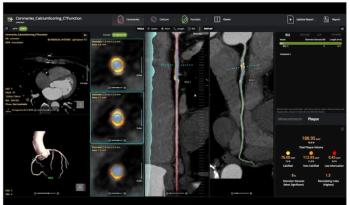
Trouble-prone Chalk River haunts medical community: When will we learn?
Fifteen years ago, a strike at the Chalk River Laboratories nuclear reactor in Ottawa, the main source of raw material for technetium-99m, was averted hours before the walkout was to take effect. Three years later, in 1995, a fuel rod got stuck. Fortunately, repairs caused only a four-day shutdown.
Fifteen years ago, a strike at the Chalk River Laboratories nuclear reactor in Ottawa, the main source of raw material for technetium-99m, was averted hours before the walkout was to take effect. Three years later, in 1995, a fuel rod got stuck. Fortunately, repairs caused only a four-day shutdown.
Providers got lucky again two years later, when workers at the nuclear reactor did go on strike. The labor dispute was settled in a week, but the harmony was short-lived, as union workers at the plant walked out less than a year later, again for one week.
These minor blips in the supply of isotopes that U.S. physicians depend on for 25 million procedures every year could have been a blessing. They could have spurred U.S. politicians to take action to create a domestic source of these critically important resources. But they did not, even though the timing back then couldn't have been better.
In 1992, the Department of Energy was considering a proposal to use a research reactor at Los Alamos National Laboratory in New Mexico to produce molybdenum, the raw material of Tc-99m. If the proposal had been followed, the U.S. could have been making the raw material for technetium by April 1993. Instead, the nuclear medicine community pinned its hopes for a domestic source of Mo-99 on the DOE award of a tritium production contract to Westinghouse, whose proposed facility would have included the production of medical isotopes. U.S. Secretary of Energy Bill Richardson in 1999 awarded the contract instead to the Tennessee Valley Authority of Knoxville, whose facility had no such medical capacity.
So here we sit, happy that the supply of moly will soon be restored but knowing that it took an emergency order from the Canadian government to do so--an order by the way that overrode the upgrade of an emergency power supply to the reactor's cooling system required as part of the reactor's license, issued in 2006.
Canadian authorities assert that safety has not been compromised by their order to restart the reactor and delay the upgrade. We certainly hope so. If a cataclysmic event struck this reactor in the future, knocking it out of commission for an extended period, one can only speculate as to how the nuclear medicine community, currently reeling from a one-month shortage, would fare.
We had four warnings in the 1990s and are now digging ourselves out of the fifth. It's anyone's guess if we will get a sixth chance.
We need to act now. We must resolve what is an intolerable dependence on foreign supply for a product critical to the well-being and health of this nation or risk a disaster in the future.
Newsletter
Stay at the forefront of radiology with the Diagnostic Imaging newsletter, delivering the latest news, clinical insights, and imaging advancements for today’s radiologists.





























